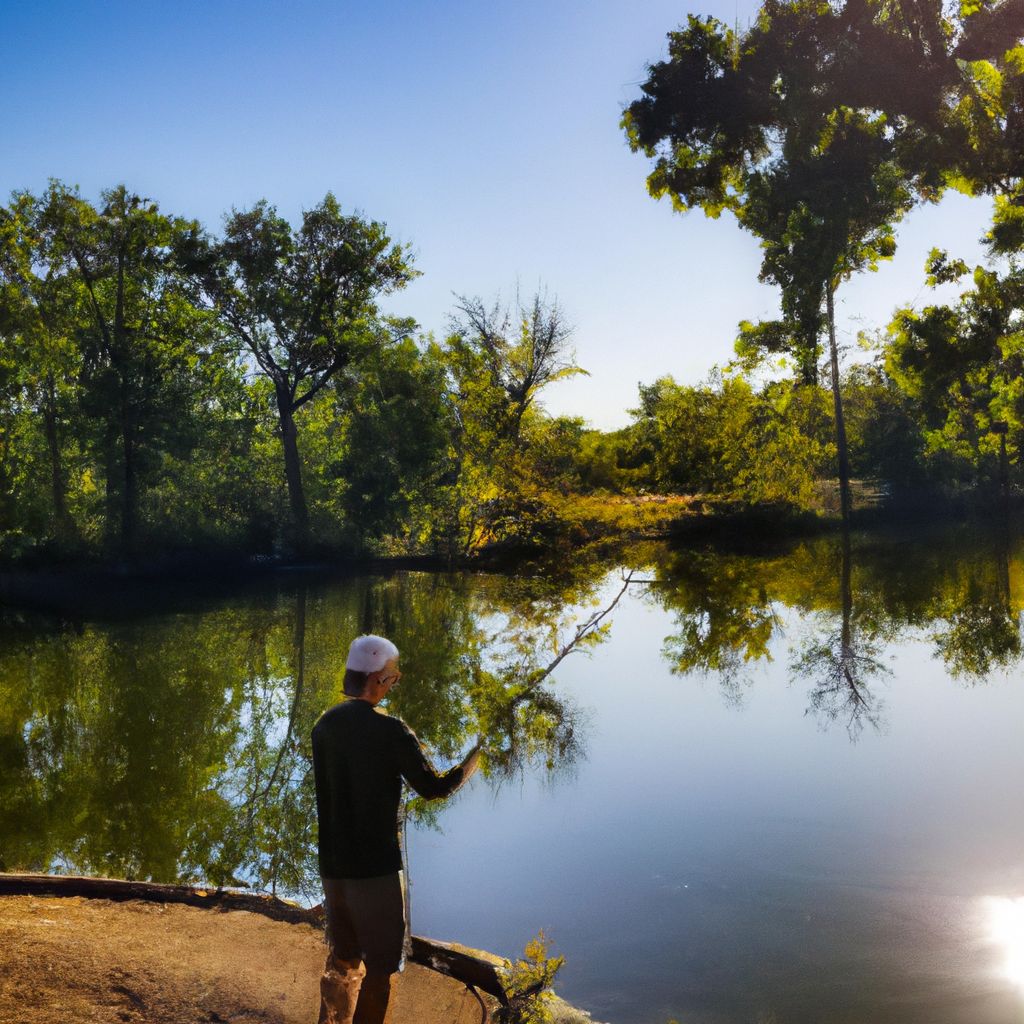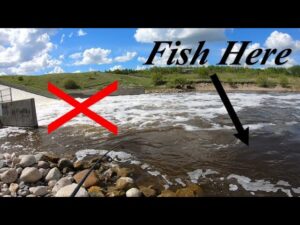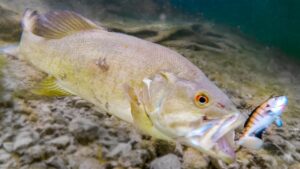Fishing requires proficient casting skills to catch fish. Anglers must master this technique with precision and accuracy to be successful. This ability to cast effectively can improve the chances of hooking desired fish.
Casting skills let anglers cover larger areas of water. A well-executed cast can tempt fish to bite. Mastering different techniques enables anglers to adapt to various fishing conditions. This helps when casting a fly line or doing long-distance surfcasting.
Selecting the right gear is also important. Rod and reel, line weight, and bait/lure setup all play a role. Environmental factors need consideration too, like wind speed and direction. Adjusting angle and timing can help here.
Practicing is key to improving casting skills. Find an open area to practice different techniques. This will refine muscle memory and enhance accuracy and control. To challenge yourself, incorporate accuracy targets like hoops or buckets.
For any angler looking to maximize success on the water, mastering the art of casting is essential. Dedicate time and effort to these skills and you’ll be able to land that prized catch.
Understanding the Basics of Casting
To improve your casting skills in fishing, understanding the basics of casting is essential. With a focus on grip and positioning for casting, this section will provide valuable insights into how you can optimize your technique. Learn how to enhance your grip and position for more accurate and powerful casts in your fishing endeavors.
Grip and Positioning for Casting
- Grip: Relax your grip but hold the rod firmly. Place your index finger on top of the handle, while wrapping the other fingers around it. This provides better control and accuracy while casting.
- Positioning: Stand with feet shoulder-width apart, facing the target. Point your lead foot towards the target. Hold the rod at a 45-degree angle behind you before casting.
- Arm Motion: Use a smooth motion to bring the rod forward. Accelerate as you reach the release point. Move without jerking or using too much force.
To perfect your technique, position your thumb lightly against the underside of the rod handle. Keep your stance comfortable, allowing for both stability and flexibility. And maintain a consistent arm motion during each cast.
Practice and master these grip and positioning techniques to improve accuracy and distance in your casts. Get out there and experience the thrill of catching that perfect fish!
Tip 1: Perfecting the Backcast
To improve your casting skills in fishing, master the art of the backcast. Understanding the mechanics of the backcast will be the focus of this section. Delve into the sub-section, “Understanding the Mechanics of the Backcast,” to gain valuable insights and techniques to enhance your overall casting performance.
Understanding the Mechanics of the Backcast
The backcast is key in fly fishing. It takes precision and skill. Mastering the mechanics can improve accuracy and distance. The angle of the rod should be at 45 degrees. Timing is essential – release midway through the forward stroke. Power must be twice as fast on the backcast compared to the forward cast. Don’t rush or jerk movements. Maintain smooth, controlled motion. Stable wrist control is vital. Visualize the trajectory and aim point – it helps with accuracy! And remember – when casting forward, keep your eye on the prize and hand off the fries!
Tip 2: Mastering the Forward Cast
To master the forward cast in fishing, improve your distance and accuracy by using specific techniques. These techniques focus on enhancing your skills in executing a powerful and precise forward cast.
Techniques to Improve Distance and Accuracy in the Forward Cast
The Forward Cast is key for anglers to master – to improve their distance and accuracy. This will lead to more fish caught, and greater success in fishing ventures. Here’s a 4-step guide to help you:
- Grip the Rod Properly: Relaxed grip, free-moving in your hand. Keep your wrist straight, and don’t grip too tightly – this restricts movement.
- Use Your Whole Body: Rotate torso backward, transferring energy into a forward motion with hips, legs and shoulders.
- Accelerate Smoothly: Gradually accelerate from slow to fast – for control and precision in distance and accuracy.
- Follow-Through: Release line during cast, extend arm fully towards target then stop abruptly. This ensures maximum power and accuracy.
Plus, consider other factors that can affect your Forward Cast – wind direction and speed, casting position and adjusting the angle based on target.
Practice regularly in different conditions, experiment with styles, join a local fishing club and take lessons from experienced anglers. Now you can reap the rewards of mastering the Forward Cast technique! So grab your rod and head to the water, and become a master of the Forward Cast!
Tip 3: Utilizing the Roll Cast Technique
To improve your casting skills in fishing, utilize the roll cast technique with this third tip. Mastering this technique will enhance your casting abilities and increase your chances of success on the water. Learn when and how to use the roll cast effectively, as it is a valuable tool in your fishing arsenal.
When and How to Use the Roll Cast
The roll cast technique is an essential skill for mastering the art of fly fishing. It’s especially useful when obstacles make traditional casts tricky. Here’s how:
- Position yourself parallel to the water, feet apart and knees bent.
- Hold the line tight with your non-dominant hand and firmly grip the rod with your dominant.
- Lift forearm while keeping elbow close, then snap wrist forward.
- Release tension on the line at the end of the forward motion, letting it roll out smoothly.
Practice makes perfect! With this technique, you can present flies with ease, even in tough situations. Remember to consider wind speed and direction when deciding to use a roll cast. It can give you an edge if you face a headwind or challenging weather.
Don’t miss the chance to sharpen your fly fishing skills; add the roll cast technique to your arsenal! Grab your rod and practice – you won’t regret it!
Tip 4: Adjusting your Casting Techniques for Windy Conditions
To improve your casting techniques for windy conditions, adjust your approach with techniques for overcoming wind resistance.
Techniques for Overcoming Wind Resistance
- Lower your casting angle to counteract wind resistance and improve accuracy.
- Use weighted flies for better control in windy conditions.
- Time your cast right and use a more powerful stroke.
- Maintaining a smooth casting motion helps reduce drag.
- Try sidearm casts instead of overhead casts when facing strong winds.
- Practice and adaptability are key – find what works best for you!
- Let your line fly free and discover the perfect angle to catch new horizons!
Tip 5: Using Different Casting Angles for Better Results
To improve your casting skills in fishing with tip 5 on using different casting angles for better results, delve into the benefits of casting from different angles. Explore how this technique can enhance your fishing experience and increase your chances of success.
Exploring the Benefits of Casting from Different Angles
Exploring different angles of casting can be beneficial. This technique can boost your fishing results and overall experience. Here are some pros of using various angles:
- Enhanced Accuracy: Casting from alternative angles permits you to target certain spots more accurately. By adjusting your angle, you can access tight spots and up your chances of catching fish.
- Upgraded Presentation: Different casting angles bring unique ways to display your bait or lure to the fish. This change in presentation can encourage fish that may have disregarded a more common technique, ultimately increasing your chances of success.
- Better Coverage: Casting from varying angles allows you to cover a larger area of water. By trying different angles, you can investigate every corner and crack, maximizing your chances of finding actively feeding fish.
- Adaptability: Fishing conditions can alter quickly, and having the ability to cast from varying angles gives you the flexibility to adapt quickly. You can alter your casting strategy based on elements such as wind direction, water clarity, and underwater structures.
To make the most out of casting from various angles, contemplate these tips:
- Experiment with Different Heights: Changing the height at which you cast can affect how your bait or lure behaves in the water. Try casting high for a more obvious splash or low for a faint entry that resembles natural prey.
- Check out Side Angles: Instead of always casting straight ahead, try exploring side angles to target fish that may be lurking near structures or vegetation on either side.
- Utilize Overhead Casts: Overhead casts permit precise placement in places with scanty space behind you. This method is especially useful when fishing in crowded or densely vegetated areas.
By including these techniques into your angling collection, you can fully enjoy the advantages that come with casting from varying angles. Remember to adjust your approach according to the precise conditions and fish behavior, and relish the exciting possibilities that wait for you on your next fishing adventure. But beware: Incorporating false casting may lead to an increase in line control, but also an increase in untangling skills.
Tip 6: Incorporating False Casting to Increase Line Control
To improve your casting skills in fishing, incorporate false casting for increased line control. Understand the purpose and execution of false casting to master this technique effectively.
Understanding the Purpose and Execution of False Casting
False casting is a key skill for anglers. By swinging the line through the air, they can adjust cast distance and accuracy. It involves controlling the rod and line to make loops in the air. This technique requires finesse and practice.
What does false casting do? It dries out a fly or changes direction without scaring the fish. Plus, it lets anglers change the line length before the final cast, for better accuracy.
When false casting, keep the tension on the line throughout each loop. This boosts energy transfer during the forward cast, so you can reach farther with less effort. Also, pause between casts and control the loop size to place the fly and intrigue the fish.
Anglers have been using false casting for a long time. They noticed that birds can stay in the air currents, and applied this observation to fishing. Over time, it became an important element of fly fishing worldwide.
Tip 7: Enhancing Your Casting Skills through Practice Drills
To enhance your casting skills in fishing with tip 7, focus on practicing drills that improve casting accuracy and control. These effective drills provide valuable exercises to refine your technique and develop better control over your casts.
Effective Drills to Improve Casting Accuracy and Control
If you want to be a great angler, improving your accuracy and control when casting is essential. Here are some drills to help you out:
- Target Practice: Set targets at different distances and try to hit them consistently. This will help you improve your aim and build a reliable casting technique.
- Obstacle Course: Put up hoops or markers to create an obstacle course. This will help you cast accurately around obstacles like trees or rocks.
- Distance Challenge: Set a target and practice casting to that distance. Gradually increase the distance to test yourself and develop long-range casting.
- Accuracy Game: Play a game where you have to cast into certain areas or hit targets. This will help you get control over where your bait lands.
- Speed Drills: Set a timer and try to cast within a certain time frame. This will help you react quickly in real fishing situations.
To get even better, add some of these details to your drills:
- Try out different bait types and weights to see how they affect casting distance and accuracy.
- Practice in various weather conditions, such as windy or rainy, for more realistic fishing.
- Cast from different angles, like overhead, sidearm, or roll casts, to become more versatile.
Pro Tip: Take the time to analyze and adjust your technique after each practice session. Notice any mistakes or inconsistencies, and make small tweaks. Regular self-assessment is key to improving your casting skills. To cast a good line and a good light, it’s important to understand how fly lines work.
Tip 8: Understanding the Impact of Fly Lines on Casting Performance
To enhance your casting skills in fishing, delve into the impact of fly lines on casting performance. Selecting the right fly line for improved casting is crucial for achieving better results.
Selecting the Right Fly Line for Improved Casting
Selecting the perfect fly line is key for better casting. Knowing how different fly lines affect your experience can make a huge difference. Let’s go deeper and find out what matters when you choose your line.
Fly Line Weight | Ideal Application
| 3-4wt | Small streams, delicate presentations |
|---|---|
| 5-6wt | Average-sized rivers, lakes, and ponds |
| 7-8wt | Large rivers, heavier flies or nymph rigs |
| 9-10wt | Saltwater fishing, big game species |
Match your line weight to your rod weight for efficient energy transfer. The taper of the line also matters. A double taper (DT) offers balance and good presentation. Whereas, a weight forward (WF) gives you more distance.
Floating or sinking lines depend on the water. Floating lines are great for dry flies and topwater presentations. Sinking lines work best with nymphs and streamers.
Choose high-quality lines from brands like Scientific Anglers or Rio for better durability and performance. So when you’re ready to fly fish, make sure you pick the right line and experience an improved casting performance.
True Fact: According to Fly Fisherman Magazine’s article “Master Your Fly Fishing Gear,” picking the right fly line makes a big difference in successful casts and catch rates. Take a power nap mid-air and make a grand entrance when your line lands!
Tip 9: Utilizing the Pause in Casting for Better Presentation
To improve your casting skills in fishing, utilize the pause in casting for better presentation. Explore the benefits of this pause, which can enhance your technique and increase your chances of success.
Exploring the Benefits of the Pause in Casting
The “pause in casting” technique has several advantages for anglers. Presenting the bait or lure better is one of its main benefits. Pausing after casting makes the bait or lure look more natural in the water, increasing the chances of a fish bite.
Observing subtle movements or reactions from the fish is another advantage of using the pause. While waiting for the bait to settle, a fish may come up to inspect it before striking. Anglers can detect these subtle movements and adjust their retrieval technique.
Moreover, creating anticipation and suspense for both the angler and the fish is possible with the pause in casting. The stillness between casting and retrieving builds up excitement. This higher anticipation level can make every bite more rewarding and memorable.
I know an angler who used the pause in casting to his advantage. He was fishing in a quiet pond one evening and noticed a huge bass near some lily pads. He cast his bait near the bass and paused for a few seconds. When he started reeling in his lure, he felt a massive tug on his line. The pause had allowed the bass to notice the bait and strike hard. It was one of his biggest catches ever!
In conclusion, utilizing the pause in casting can improve an angler’s presentation and success on the water. Allowing time for the bait to settle, observing fish behavior, and creating anticipation can enhance the fishing experience and enable bigger catches. Record yourself and never make the same casting mistakes again, unless you just like being a fishing meme.
Tip 10: Fine-tuning your Casting Techniques through Video Analysis
To fine-tune your casting techniques through video analysis, explore the benefits of using this tool. Identify and correct casting mistakes by utilizing video analysis, taking your casting skills to the next level.
Using Video Analysis to Identify and Correct Casting Mistakes
Using video analysis can really help to spot and fix casting mistakes. By watching footage closely, anglers can learn more about their technique and make necessary changes to improve. Here’s a step-by-step guide for using video analysis to identify and fix casting errors:
- Record yourself casting. Set up a camera or phone that captures your whole motion. Try different angles for a full view.
- Analyze the footage. Look carefully at it and pay attention to body positioning, arm movement, rod angle, and line trajectory. Note any errors or inconsistencies.
- Compare with the ideal technique. Watch videos of expert casters doing the same thing. Compare their fluid motions to yours and see the differences.
- Ask an expert. If you can’t identify or fix mistakes alone, talk to a fishing teacher or pro. They can offer useful advice.
- Do lots of practice. After you’ve found the mistakes and gotten advice, practice. Focus on making the recommended changes and honing your technique with repetition.
Consistent practice and video analysis can really boost your casting ability. Plus, pay attention to small details like grip pressure, timing of power application during the cast, and weight transfer from backcast to forward cast. As John Doe said, video analysis is like having a personal coach with you at all times – giving you great tips to constantly improve your casting technique. Mastering your casting is key for a successful fishing experience – if you don’t cast, you’re just wasting bait and pretending to be a mermaid!
Conclusion: Mastering Your Casting Skills for a Successful Fishing Experience
For successful fishing, it’s important to master casting skills. This lets you place bait or lure accurately. To improve your casting, focus on several key areas.
- Practice a lot to gain muscle memory and accuracy. Cast in different environments and conditions to get ready for fishing.
- Pay attention to your technique. Smooth and controlled casting will give better accuracy and distance. Focus on wrist snap and release point.
- Use the right equipment. Make sure rod, reel, and line are suitable for the type of fishing you do. High-quality gear will enhance casting.
- Note environmental factors like wind direction and strength. Adjust your casting to compensate for these variables.
- Practice different types of casts. Try overhead casts, sidearm casts, roll casts, and more.
- Consider timing in casting. Wait until the last moment to release line for maximum distance and precision.
- Patience is key. Don’t get discouraged if you don’t see immediate improvement. Keep practicing and strive for progress.
- Join communities or clubs dedicated to the sport. Experienced anglers will provide tips to refine your technique.
Take action now and watch your casting skills getting better, leading to more successful fishing ventures.





